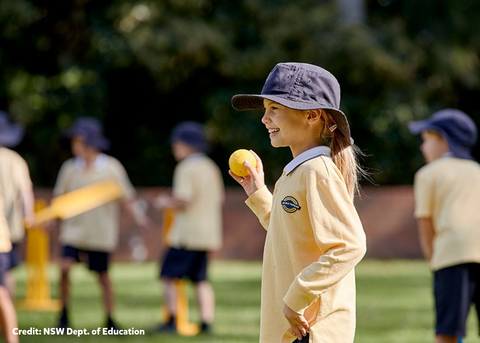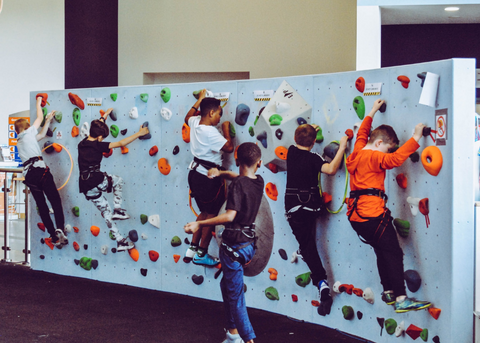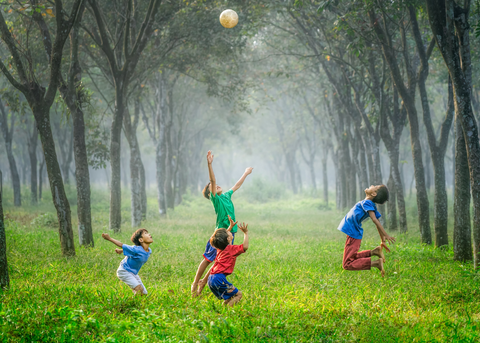 Ever considered how learning to kick a ball or run a track, or how lessons in healthy lifestyles relate to literacy? Teaching literacy in Health and Physical Education has gained greater attention in the past decade by national curriculums in Australia, the UK and the USA, to name just a few. And the reason for this is the recognition that our ability to be aware of, process and analyse what we are taught sets us up for a more successful life, as more productive members of our communities.
Ever considered how learning to kick a ball or run a track, or how lessons in healthy lifestyles relate to literacy? Teaching literacy in Health and Physical Education has gained greater attention in the past decade by national curriculums in Australia, the UK and the USA, to name just a few. And the reason for this is the recognition that our ability to be aware of, process and analyse what we are taught sets us up for a more successful life, as more productive members of our communities.
As it can be shown for any content area a student learns, in the study of Health and Physical Education, literacy is the foundational skill upon which all other knowledge is built. Further, the greatest benefit of emphasising the literacy component across learning progressions in HPE is a more deeply educated cohort of community members who understand and value a healthier lifestyle.
“The challenge [for Health and Physical Education teachers] is to select appropriate and supportive texts across the range of topics and genres to make literacy learning relevant for students and to teach strategies that ensure students comprehend the texts they read and view, compose and create texts, and engage competently and knowledgeably in dialogues about HPE issues and topics.”
State Government of Victoria, Education and Training

Why teaching literacy in Health and Physical Education is important
The Australian Curriculum clearly recognises the importance of teaching literacy in Health and Physical Education. For students from Foundation to Year 10, the aim is for students to develop the skills that will enable them to access and process information as it relates to the many aspects of their health in their lifetime and to advocate for their own and others’ needs. Of course, to do this, they must achieve set outcomes across reading, viewing, writing, comprehension and vocabulary. This is where Physical Education teachers are vital.
Rather than teaching their students to read, or testing them on general spelling skills, the Health and Physical Education teacher plays the role of supporting their students in ensuring they are accessing appropriate material, understanding what is presented and critically analysing such material for the purpose of applying it to a worldlier context.

Another example of recognition of the importance of literacy in the study of Health and Physical Education is the development of a new curriculum in this New York School District from elementary through to secondary schooling. The program aimed for students to achieve physical literacy, which would contribute to successful and rewarding lifestyle benefits immediately and in later life.
Within the teaching of physical education, the study behind this new program identified the five strands at the subject’s core:
- character development
- intelligence/cognitive development
- lifestyle development
- health-related fitness
- motor performance
It was determined at the beginning of the study that the first three strands were overshadowed by the last two in P.E. lessons. The work put into creating a new curriculum to address this led to higher levels of students’ understanding of concepts taught and a sharing of teaching techniques to improve literacy outcomes across other content areas not traditionally thought to be responsible for literacy teaching.
“The road to literacy truly runs through every classroom, whether it has desks and chairs, or merely lines on the floor.”
Sara Daggett, United Liverpool Faculty Association

How to teach literacy in Health and Physical Education classes
There is an abundance of helpful resources available to teachers specifically looking to include literacy teaching in their Health and Physical Education classrooms. We’ve collected a few of these here:
- The Victorian Government (Australia) – Literacy Teaching Toolkit
- SHAPE America – Teacher Resources for Health and Physical Education
- NZ Government Ministry of Education – Teacher Resources in HPE
- PE Scholar – Teacher Resources across all UK School Years
LiteracyPlanet’s popular spelling tools including Custom Spelling Tool (for teachers) and My Words (for students) help build students’ literacy skills in all content areas, including Physical Education. The program enables the creation of an entirely customised spelling list, which with only a few clicks can then be used across a range of games. This is a fun and engaging way to involve students in the topic area, developing spelling and vocabulary skills.
Health and Physical Education is an important aspect of the holistic literacy learning experience students receive. Teaching literacy in Health and Physical Education can have lifelong benefits, not to mention, the positive effects of physical activity on school performance.




